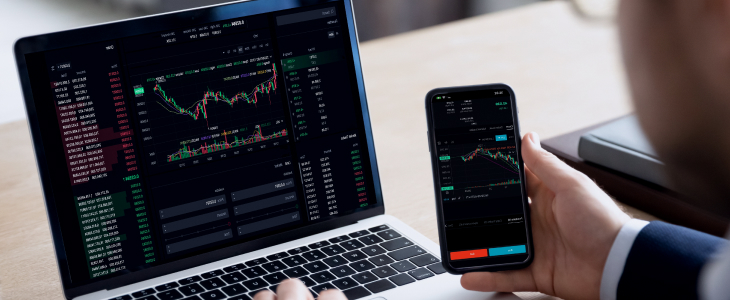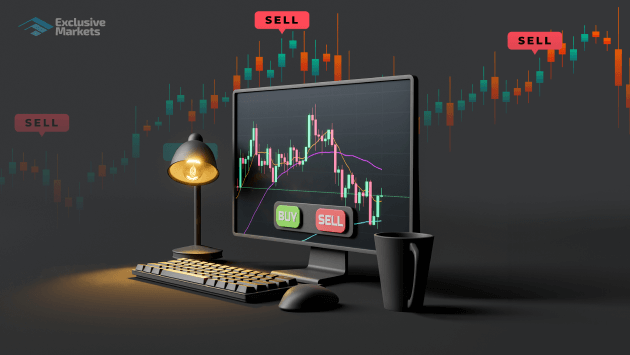
Understanding Forex Trading: Definition, Basics, and Strategies
Forex trading, or foreign exchange trading, refers to the act of buying and selling currencies in the global marketplace. This highly liquid market functions 24 hours a day, five days a week, and takes place in various financial centers around the world. Traders engage in forex trading to capitalize on currency fluctuations, aiming to make a profit from the changing value of currencies. If you’re looking for forex trading definition Best Platforms for Trading, this comprehensive guide will help familiarize you with the basics of forex trading, strategies, and tips for getting started.
What is Forex Trading?
The forex market is the world’s largest financial market, with a daily trading volume exceeding $6 trillion. Unlike stock markets, which operate as centralized exchanges, forex trading occurs over-the-counter (OTC), meaning transactions are conducted directly between parties, usually through digital trading platforms and networks.
In forex trading, currencies are traded in pairs (e.g., EUR/USD, GBP/JPY), where the first currency is the base currency and the second is the quote currency. The price of a currency pair indicates how much of the quote currency is needed to purchase one unit of the base currency. Understanding how these pairs work is crucial for anyone looking to trade in the forex market.
How Does Forex Trading Work?
Forex trading involves speculating on the price fluctuations of currency pairs. When a trader believes that a currency will strengthen against another, they may buy (go long) that currency pair. Conversely, if they believe one currency will weaken, they can sell (go short) the currency pair.
Leverage and Margin in Forex Trading
One of the notable features of forex trading is the ability to use leverage. Leverage allows traders to control a larger position with a relatively small amount of capital. For example, a leverage ratio of 100:1 enables a trader to control $100,000 in currency with just $1,000 in their account.

While leverage can amplify profits, it can also increase potential losses, making it essential for traders to manage their risk effectively. This is where the concepts of margin and stop-loss orders come into play.
Key Terms in Forex Trading
To navigate the forex market successfully, it’s essential to understand some key terms. Here are a few important ones:
- Pip: A pip (percentage in point) is the smallest price move that a given exchange rate can make based on market convention. For most currency pairs, a pip is typically the fourth decimal place.
- Spread: The spread is the difference between the bid and ask price of a currency pair. It is essentially the cost of trading and can vary based on market conditions.
- Lot: A lot refers to the standardized quantity of a currency pair being traded. Most platforms offer standard lots (100,000 units), mini lots (10,000 units), and micro lots (1,000 units).
Types of Forex Market Participants
Various participants engage in forex trading, each with distinct motives:
- Central Banks: These institutions manage a country’s currency, money supply, and interest rates and play a crucial role in influencing exchange rates.
- Commercial Banks: They facilitate currency trading for their clients, providing liquidity to the market while also engaging in proprietary trading.
- Institutional Investors: Hedge funds, pension funds, and other large investors often trade currencies to diversify their portfolios or as part of a broader investment strategy.
- Retail Traders: Individual traders use online trading platforms to speculate on currency movements, often taking advantage of leverage offered by brokers.
Strategies for Forex Trading
Successful forex trading often requires the implementation of specific strategies. Here are some common approaches:
1. Day Trading
Day trading involves making multiple trades within a single day, capitalizing on small price movements. Traders who use this approach typically close all positions before the market closes to avoid overnight risk.

2. Swing Trading
Swing trading focuses on capturing short- to medium-term gains, holding positions from a few days to several weeks. Swing traders utilize technical analysis to identify potential reversal points in price trends.
3. Scalping
Scalping is a high-frequency trading technique where traders make rapid trades to exploit small price changes. Scalpers rely on high liquidity and low spreads, executing trades within seconds or minutes.
Risk Management in Forex Trading
Effective risk management is crucial in forex trading. It involves setting appropriate stop-loss and take-profit levels to limit losses and protect profits. Additionally, traders should only risk a small percentage of their capital on a single trade, typically no more than 1-2%, to safeguard their overall trading account.
Getting Started with Forex Trading
If you’re new to forex trading, follow these steps to get started:
- Educate Yourself: Take the time to learn the basic concepts of forex trading, market analysis, and risk management strategies.
- Choose a Reliable Broker: Research and select a reputable forex broker that aligns with your trading preferences and offers a user-friendly trading platform.
- Open a Demo Account: Practice trading in a risk-free environment by opening a demo account. This will help you gain experience and confidence before trading real money.
- Develop a Trading Plan: Create a comprehensive trading plan that outlines your trading goals, strategies, risk management rules, and evaluation criteria.
Conclusion
Forex trading presents opportunities for profit but also comes with significant risks. Understanding the fundamental concepts, market dynamics, and effective strategies is essential for success. By approaching the forex market with a solid foundation of knowledge and effective risk management strategies, you can navigate this exciting financial landscape with confidence. Whether you’re a beginner or an experienced trader, continuous learning and adaptation will be your keys to success in the ever-evolving world of forex trading.